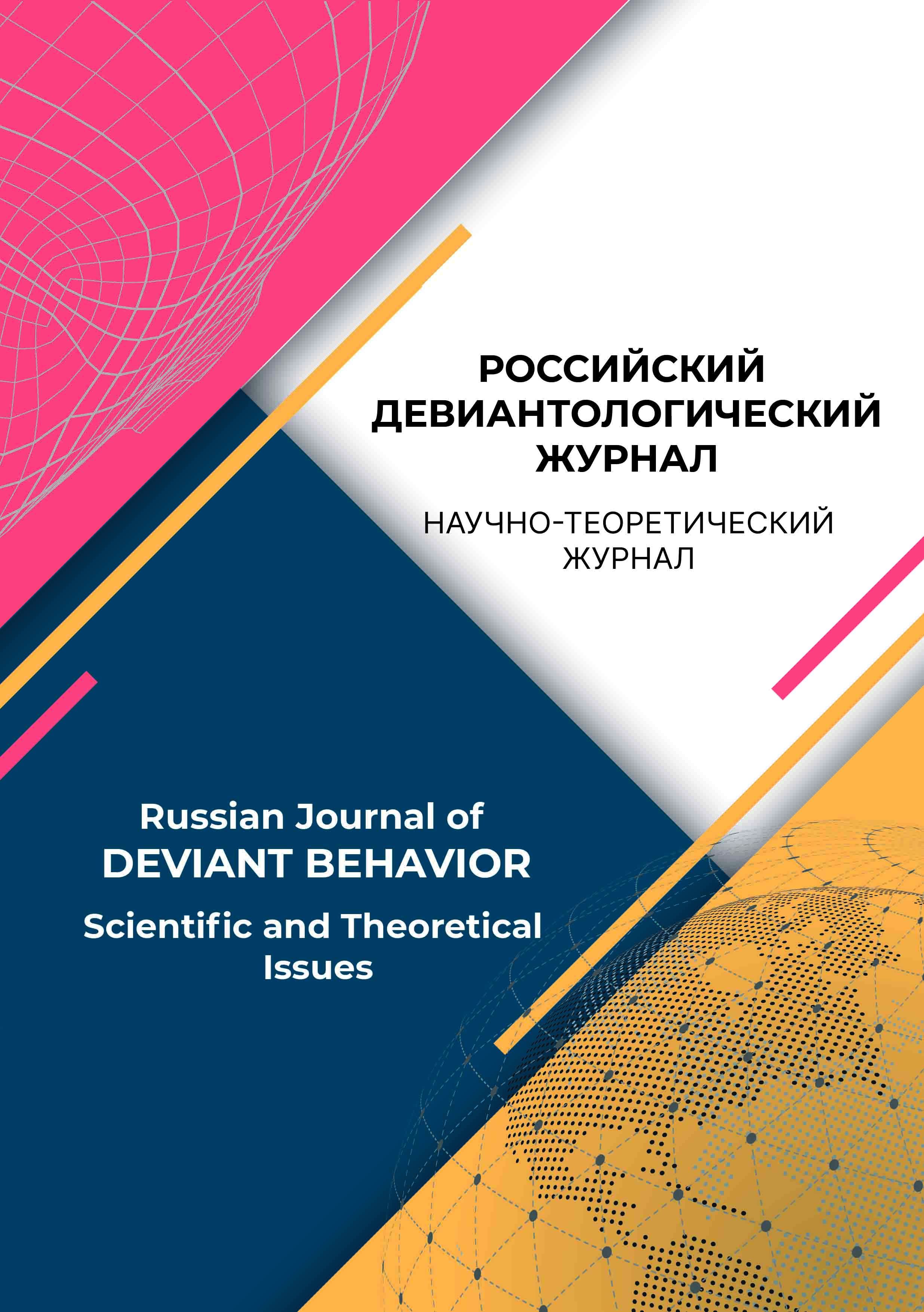Russian Federation
UDC 159.9
Introduction. The law enforcement agencies of the Russian Federation widely use a polygraph in solving and investigating crimes as part of psychophysiological research. However, a number of foreign countries are actively conducting research on implementing new psychophysiological technologies in the practical activities of law enforcement officers. One of such technologies is the eye-tracker. The article describes the experience of applying the technology of eye-tracking in the professional activities of law enforcement officers for solving and investigating crimes, in particular, for assessing the reliability of the reported information, revealing hidden information, as well as identifying information about previously perceived persons and objects on the example of foreign countries. These provisions determine the purpose of our research - the generalisation and analysis of foreign experience of applying the technology of eye-tracking in the activities of law enforcement agencies. Methods. General scientific research methods such as analysis, synthesis, induction, deduction and description were used in the research. Results. The current state of theoretical and methodological ideas about eye-tracking, as well as areas of its application, methodological and procedural features of its use in the activities of law enforcement agencies of foreign countries was determined.
eye-tracking technology, law enforcement officers, oculomotor activity, psychophysiological research, reliability of reported information, hidden information
1. Bakanov, A. S. (2016). Model' prinyatiya reshenij istinno / lozhno na osnove eksperimental'nogo issledovaniya traektorii vzora. V V. A. Barabanshchikov (otv. red.), Ajtreking v psihologicheskoj nauke i praktike: monografiya (str. 134–140). Moskow: Izdatel'stvo Kogito-Centr.
2. Barabanshchikov, V. A. (otv. red.) (2016). Ajtreking v psihologicheskoj nauke i praktike: monografiya. Moskow: Izdatel'stvo Kogito-Centr.
3. Bessonov, A. A., Borlakov, SH. V., Sokolov, A. E. (2021). Perspektivy razvitiya metodov ocenki dostovernosti informacii s uchetom praktiki primeneniya elektroencefalografa, poligrafa i ajtrekera. Rassledovanie prestuplenij: problemy i puti ih resheniya, 2 (32), 89–93.
4. Bessonova, Yu. V., Oboznov, A. A. (2019). Ajtreking v diagnostike pravdy-lzhi. Institut psihologii Rossijskoj akademii nauk. Organizacionnaya psihologiya i psihologiya truda, 4 (1), 46–86.
5. Glezer, V. D. (1993). Zrenie i myshlenie, 2-e izd., ispr. i dop. Saint Petersburg: Nauka.
6. Zhbankova, O. V., Gusev, V. B. (2018). Primenenie ajtrekinga v praktike professional'nogo otbora kadrov. Eksperimental'naya psihologiya, 11 (1), 156–165. https://doi.org/10.17759/exppsy.2018110109
7. Zhegallo, A. V., Hoze, E. G. (2016). Dvizhenie glaz pri ocenke lica, peredayushchego dostovernuyu i nedostovernuyu informaciyu. V V. A. Barabanshchikov (otv. red.), Ajtreking v psihologicheskoj nauke i praktike: monografiya (str. 256–259). Moskow: Izdatel'stvo Kogito-Centr.
8. Zlokazov, K. V., Lomtatidze, O. V., Bulatova, E. V. (2016). Zritel'nye harakteristiki vospriyatiya kreolizovannyh tekstov destruktivnoj napravlennosti. Izvestiya Ural'skogo federal'nogo universiteta. Seriya 1: Problemy obrazovaniya, nauki i kul'tury, 1 (147), 92–101.
9. Men'shikova, G. Ya., Lunyakova, E. G., Kovalev, A. I., Evsevicheva, I. V. (2016). Osobennosti dvizheniya glaz pri lozhnyh i pravdivyh otvetah. V V. A. Barabanshchikov (otv. red.), Ajtreking v psihologicheskoj nauke i praktike: monografiya (str. 163–170). Moskow: Izdatel'stvo Kogito-Centr.
10. Ognev, A. S., Venerina, SHCH. G., Vinogradova, I. A. (2012). Novye psihodiagnosticheskie vozmozhnosti trekinga glaz. Vestnik moskovskogo gosudarstvennogo gumanitarnogo universiteta im. M. A. Sholohova. Pedagogika i psihologiya, 3, 107–112.
11. Shelepin, Yu. E. (2017). Vvedenie v nejroikoniku. Saint Petersburg: Troickij most.
12. Yarbus, A. L. (1965). Rol' dvizhenij glaz v processe zreniya. Moskow: Nauka.
13. Borza, D., Itu, R., & Danescu, R. (2018). In the Eye of the Deceiver: Analyzing Eye Movements as a Cue to Deception. Journal of Imaging, 4 (10), 120. https://doi.org/10.3390/jimaging4100120
14. Büttner, C. (2019). A new approach to solving crimes : Do the eyes of a suspect reveal if they are guilty of a crime? URL: https://purl.utwente.nl/essays/78211
15. Clark, D. A., & Beck, A. T. (1954). Cognitive Therapy of Anxiety Disorders: Science and Practice. New York, London: The Guilford Press.
16. Foa, E. B., & Kozak, M. J. (1986). Emotional processing of fear: Exposure to corrective information. Psychological Bulletin, 99 (1), 20–35. https://doi.org/10.1037/0033-2909.99.1.20
17. Lykken, D. T. (1974). Psychology and the lie detector industry. American Psychologist, 29 (10), 725–739. https://doi.org/10.1037/h0037441
18. Millen, A. E., Hope, L., Hillstrom, A. P., & Vrij, A. (2017). Tracking the truth: the effect of face familiarity on eye fixations during deception. Quarterly journal of experimental psychology (2006), 70 (5), 930–943. https://doi.org/10.1080/17470218.2016.1172093
19. Millen, A. E., Hope, L., & Hillstrom, A. P (2020). Eye spy a liar: assessing the utility of eye fixations and confidence judgments for detecting concealed recognition of faces, scenes and objects. Cogn. Research, 5, 38. https://doi.org/10.1186/s41235-020-00227-4
20. Pavlov, Yu. G., Zlokazov, K. V., Slesareva, O. D., & Pavlova, N. V. (2016). Eye-Tracking Based Technic For Detection Of Deception. Perception, 45.
21. Peth, J., Suchotzki, K., & Gamer, M. (2016). Influence of countermeasures on the validity of the Concealed Information Test. Psychophysiology, 53 (9), 1429-1440. https://doi.org/10.1111/ psyp.12690
22. Schwedes, C., & Wentura, D. (2012). The revealing glance: eye gaze behavior to concealed information. Memory & cognition, 40 (4), 642–651. https://doi.org/10.3758/s13421-011-0173-1
23. Vrij, A., Fisher, R., Mann, S., & Leal, S. (2008). A cognitive load approach to lie detection. Journal of Investigative Psychology and Offender Profiling, 5 (1–2), 39–43. https://doi.org/10.1002/jip.82
24. Walczyk, J. J., Griffith, D. A., Yates, R., Visconte, S. R., Simoneaux, B., & Harris, L. L. (2012). LIE Detection by Inducing Cognitive Load: Eye Movements and Other Cues to the False Answers of “Witnesses” to Crimes. Criminal Justice and Behavior, 39 (7), 887–909. https://doi.org/10.1177/0093854812437014
25. Watalingam, R. D., Richetelli, N., Pelz, J. B., & Speir, J. A. (2017). Eye tracking to evaluate evidence recognition in crime scene investigations. Forensic science international, 280, 64–80. https://doi.org/10.1016/j.forsciint.2017.08.012














